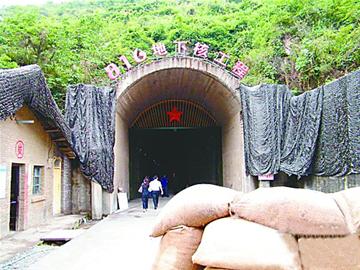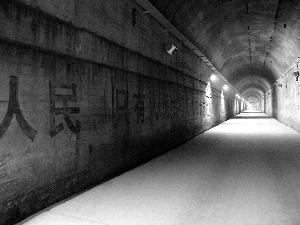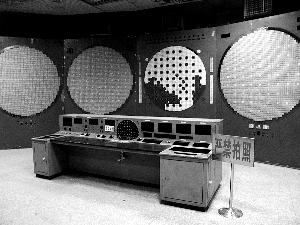Access granted—Secret nuclear facilities unveiled
|
|
|
The entrance to the cave that used to house nuclear facilities. |
A massive, underground nuclear fortress in the Baitao Township of Chongqing drew 6,000 visitors, who explored what may be the world's largest man-made cave on April 24, its first day open to the public.
Photos: China 816 Nuclear Military Plant
The unfinished and now dormant nuclear facility, which was classified as Factory 816, lies concealed within a mountain. It stands over 20 stories and contains a maze of compartments and passageways. And it's quite safe—able to resist a thermonuclear explosion, which is equivalent to 1 million tons of TNT.
Visitors can tour floors six through nine, which include the central control room and the nuclear reactor's chamber, yet 90 percent of the cave remains off limits.
After the nuclear facility was closed, Chongqing Jianfeng Chemical Industry Group (Jianfeng), converted it to a chemical-fertilizer plant.
He Chengfu, a manager at Jianfeng, said the cave occupies 13,000 sq m and comprises more than 130 roads and tunnels.
Due to fear of military attacks from the West and the Soviet Union, in the '60s the Chinese government decided to relocate inland its industrial bases, including its military factories, from coastal areas and major cities.
The government decided the mountainous, fog-covered Baitao Township was an ideal location due to its water-efficiency and the thick forest that surrounded it, so the town was erased from maps.
In 1966, construction of Factory 816 commenced. The government thoroughly probed the backgrounds of residents anywhere near the building site. Those related to former power-holding classes, such as landlords and the Kuomintang, were considered potential threats and ordered to move.
|
|
|
A tunnel on the sixth floor of the cave. |
Meanwhile, civilian construction workers and soldiers poured into town. Security remained paramount. Workers, residents and soldiers couldn't speak at all about the project. The cave was restricted to all except essential personnel.
Digging the monstrous cave was the army's sole responsibility. Le Wenguo, a former worker at the site, told The Beijing News that the central government sent four regiments to the town, which brought the total number of soldiers to around 8,000.
Former soldier Guan Chengxiang recalled working three rotating shifts at a non-stop pace. Sometimes his company simply didn't sleep, as no rest was permitted before finishing the daily assignments.
"After a shift, we were so tired that we could fall asleep leaning against a wall," Guan said. He was among the first group of visitors to the facility when it was opened to the public.
During the construction, 71 soldiers died. Digging continued until 1975.
|
|
|
The central control room on the ninth floor of the cave. |
In the '70s and '80s, the factory expanded fast, adding a large number of elite engineers. Many were graduates of China's prestigious universities, such as Tsinghua, Peking and Fudan. The staff peaked at 5,240 in 1981.
For the factory employees, confidentiality came first. Le said secrecy was constantly stressed and every newcomer went through a detailed briefing emphasizing secrecy. Engineers weren't allowed to read other colleagues' technical documents. Even the notebooks they used weren't permitted to be taken out of the factory, Le said.
Guo Zhenchuan, another former employee, said colleagues never asked each other's job. And even getting married required approval, as Guo learned when he found the right woman.
In the '80s, the factory still hadn't completed building the nuclear facilities, but the Chinese political landscape underwent radical changes. In 1979, China launched its reform and opening-up policy. In 1984, the government concluded that Factory 816 did not serve its best interests and ordered a complete halt to construction.
Li Jiaru, a former engineer, said the construction took too long and, moreover, the nuclear facilities were already out of date by the '80s, which is why he believes the construction was halted.
In 2002, China's National Nuclear Corporation declassified the cave, which was immediately viewed as a potential tourist attraction. After some maintenance, Jianfeng finally opened it to public this year.
 0
0 










Go to Forum >>0 Comments